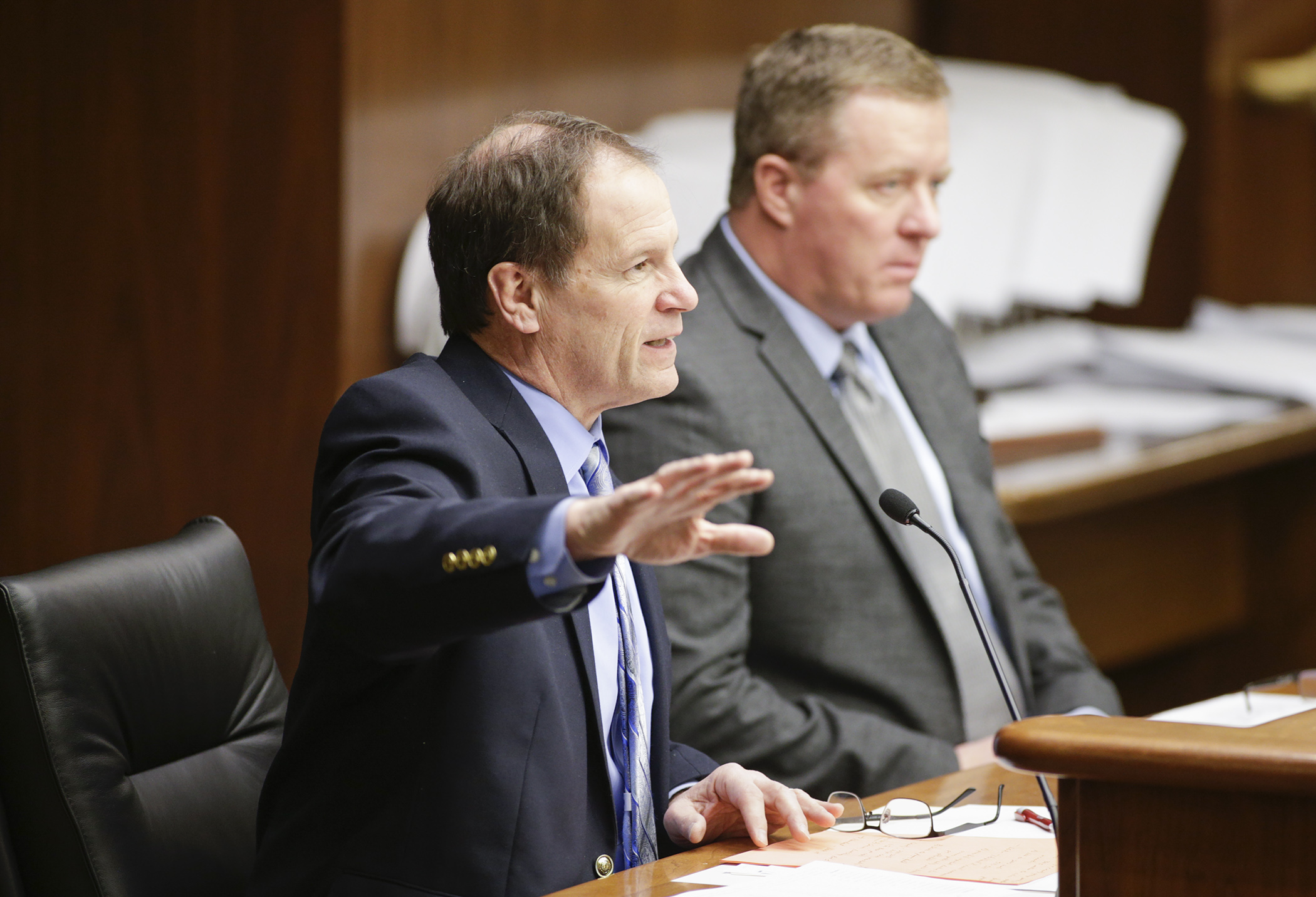Local government aid, long a roller coaster, may climb upward again

They called it “the Minnesota Miracle” when, in the early 1970s, the state’s economy boomed. The “miracle” was partially spurred by a tax policy choice, in that Gov. Wendell Anderson and the Legislature agreed to a significant tax increase and the introduction of local government aid in an attempt to keep the “Good Life in Minnesota” touted on a 1973 Time magazine cover fairly consistent no matter where you lived in the state.
But how much local governments receive in state aid has since been peaking and plummeting, coasting and plunging. When adjusted for inflation to 2018 dollars, local government aid soared to its apex in 1990 before starting an overall downward trend, one of its last upward spikes occurring in 2002.
That year’s total is being cited as the benchmark level to which local government aid should return, according to Gov. Tim Walz’s budget and four bills laid over, as amended, Monday by the House Property and Local Tax Division for possible inclusion in the division’s report to the House Taxes Committee. Each proposal would increase the city local government aid (LGA) appropriation by about $30.6 million per year, to a total of $565 million annually.
But both the governor’s budget proposal and one of the bills, HF1163 — sponsored by Rep. Paul Marquart (DFL-Dilworth) — go further by not only increasing city LGA, but county program aid by the same amount of $30.6 million per year, thus increasing annual aid to counties to $265.3 million.
The bill’s companion, SF986, sponsored by Sen. Gary Dahms (R-Redwood Falls), awaits action by the Senate Taxes Committee.
The $30.6 million increase in aid to cities was also the centerpiece of HF1434, sponsored by Rep. Samantha Vang (DFL-Brooklyn Center), HF1102, sponsored by Rep. Dave Lislegard (DFL-Aurora) and HF1101, sponsored by Rep. Jeff Brand (DFL-St. Peter). HF1102 and HF1101 would also insert an inflator into the cities’ “need” formula.
All three bills have companions that have been referred to the Senate Taxes Committee.
Advocating for the inflator provision was Bradley Peterson, executive director of the Coalition of Greater Minnesota Cities. “While the overall state budget has grown by 65 percent since 2002, the LGA program has decreased by 5 percent. Because of erosion of the program through inflation and underfunding, the purchasing power of the LGA program today has dropped to 55 percent of what it would have been in 2002,” he said.
Rep. Steve Drazkowski (R-Mazeppa) lamented that LGA increases since 2013 haven’t resulted in a corresponding reduction in property taxes.
“We have looked at these LGA increases in the past,” Drazkowski said, “and each of them has ushered in after them a property tax increase for Minnesotans in those communities.”
Related Articles
Search Session Daily
Advanced Search OptionsPriority Dailies
Ways and Means Committee OKs proposed $512 million supplemental budget on party-line vote
By Mike Cook Meeting more needs or fiscal irresponsibility is one way to sum up the differences among the two parties on a supplemental spending package a year after a $72 billion state budg...
Meeting more needs or fiscal irresponsibility is one way to sum up the differences among the two parties on a supplemental spending package a year after a $72 billion state budg...
Minnesota’s projected budget surplus balloons to $3.7 billion, but fiscal pressure still looms
By Rob Hubbard Just as Minnesota has experienced a warmer winter than usual, so has the state’s budget outlook warmed over the past few months.
On Thursday, Minnesota Management and Budget...
Just as Minnesota has experienced a warmer winter than usual, so has the state’s budget outlook warmed over the past few months.
On Thursday, Minnesota Management and Budget...